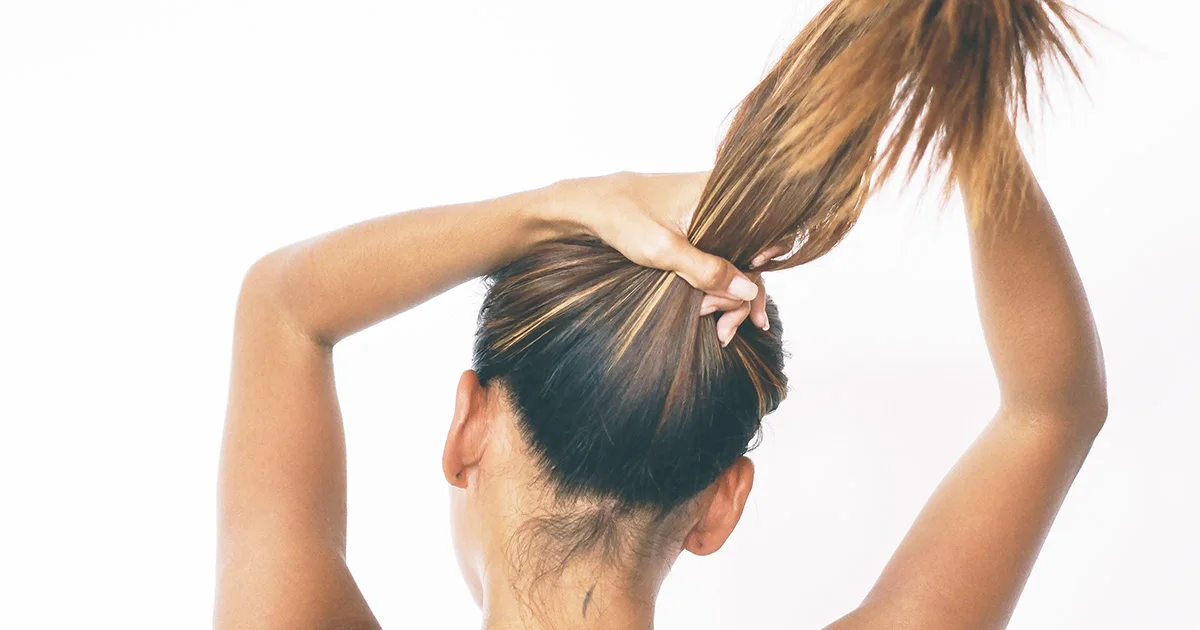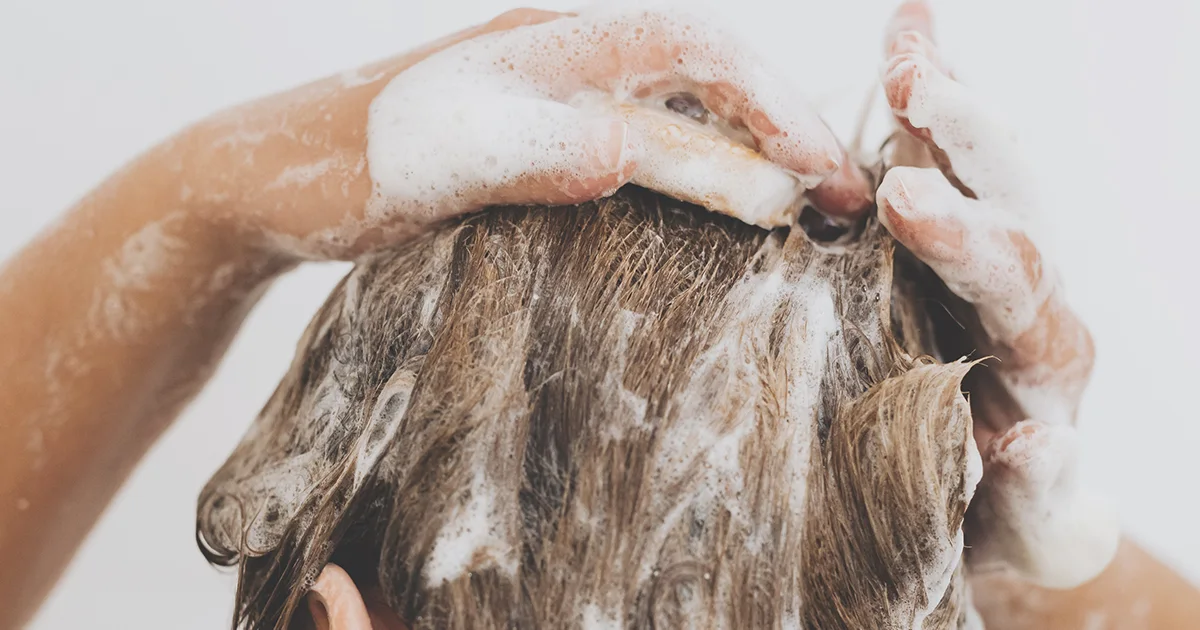Here's what we'll cover
Here's what we'll cover
There are many hair loss shampoos on the market promising to stop hair loss and produce thicker hair.
Some products claim to achieve this through a proprietary brew of vitamins and minerals. Others aim to block DHT, a potent form of testosterone that plays an important role in male pattern hair loss.
Before you go shopping for DHT blocker shampoo, let’s take a look at what the research shows about shampoos that claim to block DHT.
What is DHT?
DHT (dihydrotestosterone) is a potent form of testosterone, the dominant male sex hormone.
Androgens like DHT contribute to typical adult male characteristics, such as a deeper voice, increased muscle mass, and body hair. DHT also aids in the development of male sex organs and other changes that occur during puberty.
But in adulthood, DHT can turn on you. DHT affects hair follicles on the scalp in those genetically susceptible, causing hairs to thin and shrink. Eventually, those follicles may stop producing hair altogether.
Researchers aren't exactly sure why DHT is such an underminer. By age 50, more than half of American men will experience male pattern hair loss (Rhodes, 1998).
What does DHT do?
In men, testosterone converts to DHT, which then links to receptors on the hair follicles in your scalp. That causes follicles to shrink, which leads to less robust hair over time. And it’s not that those losing hair don't have as much testosterone; the receptors in their hair follicles are just more sensitive to DHT.
Researchers found that hair loss could be stopped and even reversed in those with male pattern baldness by blocking DHT. The first drug on the market was finasteride (brand name Propecia) which works by blocking the conversion of testosterone to DHT, thereby reducing the amount in your system.
Finasteride Important Safety Information: Read more about serious warnings and safety info.
How do DHT blocker shampoos work?
Much like how finasteride pills work, DHT blocker shampoos also aim to reduce the amount of DHT around hair follicles. Several of these shampoo products claim to reduce the effects of DHT effects on hair follicles.
Some DHT blocker shampoos contain ketoconazole, an antifungal medication. Different brands are available over-the-counter or at higher concentrations with a prescription, but the jury is still out on whether they’re effective as stand-alone treatments. Studies have found that when combined with FDA-approved hair loss treatments (like minoxidil and finasteride) ketoconazole can improve results.
Many other products tout DHT-blocking effects, including shampoos that contain zinc, biotin, niacin, natural extracts, and botanicals like saw palmetto. And while there has been some research examining if these ingredients work, they’re not likely to have much impact on hair loss if they come in a wash-off product.
Are DHT blocker shampoos effective for hair growth?
Ketoconazole is primarily used to treat fungal infections. However, there is evidence that it can also prevent testosterone from turning into DHT, possibly reducing hair loss (Perez, 2004). Keep in mind that ketoconazole shampoo alone is unlikely to restore your flowing mane.
Research has found that when combined with oral finasteride, ketoconazole shampoo was more effective at reducing hair loss than finasteride alone (Khandpur, 2002). Another study reported that using a 2% ketoconazole shampoo was nearly as effective for hair growth as 2% minoxidil (Piérard-Franchimont, 1998). That's pretty significant, as shampoo is washed off after a few minutes, while minoxidil is left on the scalp all day.
Unfortunately, scientific evidence doesn't show that other common ingredients in DHT blocker shampoos cause hair regrowth.
One study looked at the 50 most popular hair loss products on Amazon. Forty-three percent of them were shampoos or conditioners. Those boasted 15 common ingredients, several of which are said to block DHT. Researchers compared the ingredients to available scientific research about hair loss and regrowth.
Each was assigned a corresponding letter grade from A to F. All earned either a C or D (Bater, 2018). None compared to topical minoxidil, which got an A. The researchers noted that minoxidil is left on the scalp, while hair loss shampoos are washed off after a few minutes.
How to pick a shampoo to treat hair loss
Choose a shampoo with ketoconazole. According to current research, ketoconazole is the only ingredient in shampoos known to help with hair loss. OTC ketoconazole (brand name Nizoral) is a 1% formula, while prescription strength is 2%. You might want to try the OTC version or talk to a dermatologist about whether the prescription strength is right for you.
Don't fall for conventional wisdom. For decades, biotin (vitamin B7) has been touted as a supplement that contributes to healthy hair growth. But the evidence to support those claims is weak––the JDD researchers assigned it a D grade.
Don't be suckered by online reviews. According to the authors of the JDD study, the average customer rating for the top 50 hair loss products was four stars out of five. But only one common ingredient in those products—minoxidil, in topical form—had enough scientific backing to make it worthy of an A grade. None of the others even got a B.
How to use DHT blocker shampoos
To get the best results, use shampoo in combination with one of these four hair loss treatments.
Finasteride
Finasteride (brand name Propecia) is an oral medication that works by preventing the enzyme 5-alpha-reductase from converting testosterone into DHT. The less DHT circulating in your bloodstream, the less there is to damage hair follicles. The American Hair Loss Association found that finasteride stopped hair-loss progression in 86% of men who took the medication in clinical trials, and 65% of them experienced increased hair growth.
Some companies also offer a topical version of finasteride that you apply to your scalp that works right at the root of the problem.
Minoxidil
Minoxidil (brand name Rogaine) is a foam or liquid rubbed onto the scalp twice a day. Scientists believe it helps stem or slow hair loss by increasing the flow of blood and nutrients to hair follicles. About 40% of men experience hair regrowth when using minoxidil, and studies have found that using finasteride and minoxidil together is more effective for hair preservation than using either one alone.
An LLLT device
In addition to taking finasteride and using minoxidil, you can do low-level laser therapy (LLLT), which is FDA-cleared for treating hair loss. These devices emit red LED light, which increases blood flow to follicles and reduces inflammation.
According to a 2017 meta-analysis of studies, LLLT was found to be superior to placebo in regrowing hair (Adil, 2017). The researchers concluded that LLLT, finasteride, and minoxidil are all effective for promoting hair regrowth in men with male pattern hair loss.
Oral Minoxidil Important Safety Information: Read more about serious warnings and safety info.
DISCLAIMER
If you have any medical questions or concerns, please talk to your healthcare provider. The articles on Health Guide are underpinned by peer-reviewed research and information drawn from medical societies and governmental agencies. However, they are not a substitute for professional medical advice, diagnosis, or treatment.
Adil, A., & Godwin, M. (2017, July). The effectiveness of treatments for androgenetic alopecia: A systematic review and meta-analysis. Journal of the American Academy of Dermatology . Retrieved from https://www.ncbi.nlm.nih.gov/pubmed/28396101
Aldhalimi, M. A., Hadi, N. R., & Ghafil, F. A. (2014, March 9). Promotive effect of topical ketoconazole, minoxidil, and minoxidil with tretinoin on hair growth in male mice. Retrieved from https://www.ncbi.nlm.nih.gov/pubmed/24734193
American Hair Loss Association. (n.d.). Retrieved from https://www.americanhairloss.org/men_hair_loss/treatment.html
Bater, K., & Rieder, E. (2018). Over-the-Counter Hair Loss Treatments: Help or Hype? Journal of Drugs in Dermatology, 17 (12), 1317–1321. https://pubmed.ncbi.nlm.nih.gov/30586264/
Carson, C., & Rittmaster, R. (2003, April). The role of dihydrotestosterone in benign prostatic hyperplasia. Retrieved from https://www.ncbi.nlm.nih.gov/pubmed/12657354
English, R. S., & Barazesh, J. M. (2019, March). Self-Assessments of Standardized Scalp Massages for Androgenic Alopecia: Survey Results. Retrieved from https://www.ncbi.nlm.nih.gov/pubmed/30671883
Hugo Perez, B. S. (2004). Ketocazole as an adjunct to finasteride in the treatment of androgenetic alopecia in men. Retrieved from https://www.ncbi.nlm.nih.gov/pubmed/14729013
Murugusundram S. (2009). Serenoa Repens: Does It have Any Role in the Management of Androgenetic Alopecia? Journal of Cutaneous and Aesthetic Surgery , 2 (1), 31–32. https://www.ncbi.nlm.nih.gov/pmc/articles/PMC2840915/
Piérard-Franchimont, C., De Doncker, P., Cauwenbergh, G., & Piérard, G. E. (1998). Ketoconazole shampoo: effect of long-term use in androgenic alopecia. Retrieved from https://www.ncbi.nlm.nih.gov/pubmed/9669136
Rhodes, T., et al. (1998). Prevalence of male pattern hair loss in 18-49 year old men. Dermatologic surgery: official publication for American Society for Dermatologic Surgery [et al.], 24(12), 1330–1332. https://pubmed.ncbi.nlm.nih.gov/9865198/










